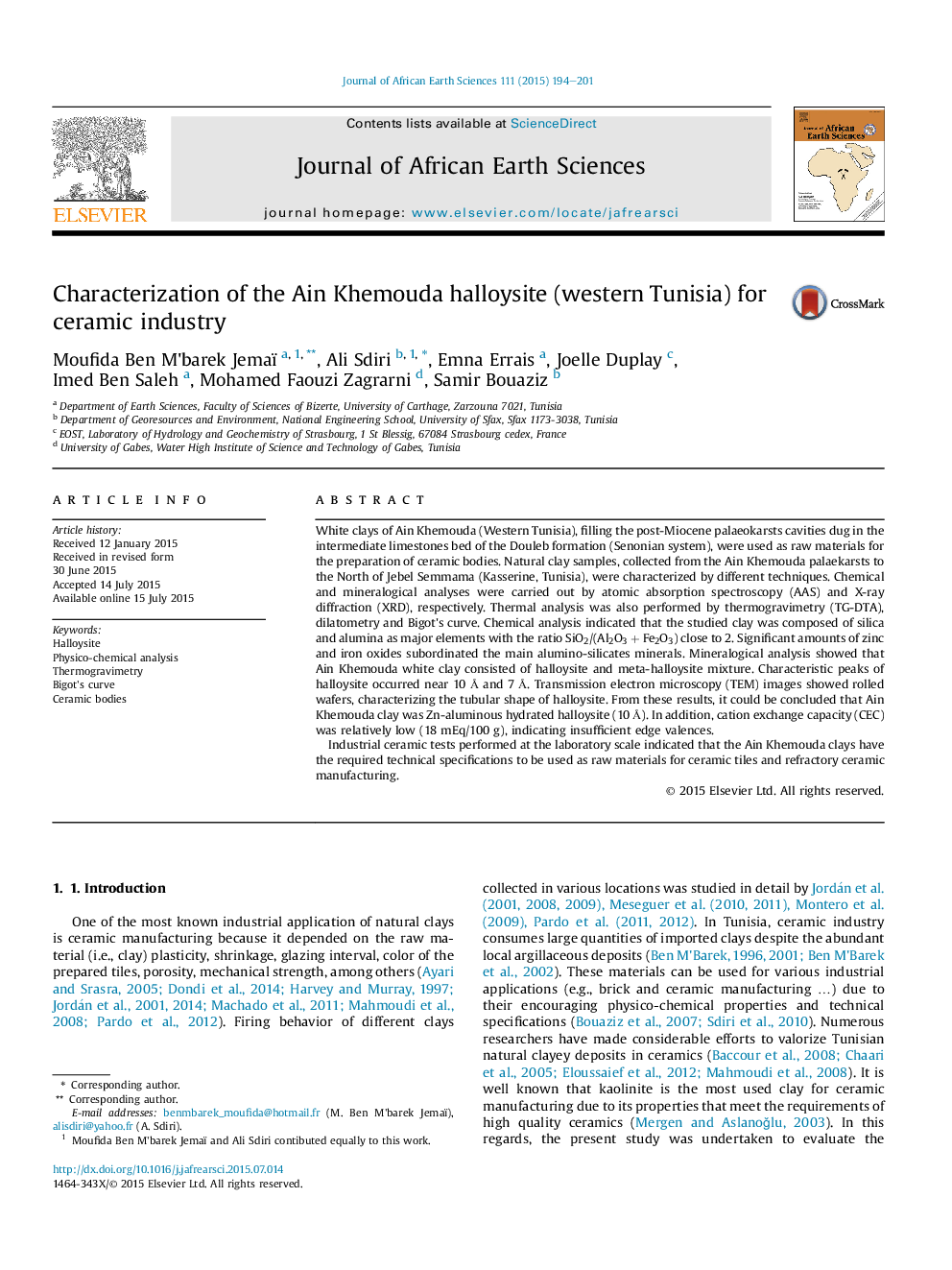| کد مقاله | کد نشریه | سال انتشار | مقاله انگلیسی | نسخه تمام متن |
|---|---|---|---|---|
| 4728494 | 1640196 | 2015 | 8 صفحه PDF | دانلود رایگان |

• Halloysite of western Tunisia is a special clay deposits.
• Tunisian natural halloysite is potentially utilizable for ceramic manufacturing.
• Impurities influenced the firing behavior of natural clay.
• Ceramic tests on the raw halloysite gave encouraging results.
• The studied material can be effectively used for ceramic tile manufacturing.
White clays of Ain Khemouda (Western Tunisia), filling the post-Miocene palaeokarsts cavities dug in the intermediate limestones bed of the Douleb formation (Senonian system), were used as raw materials for the preparation of ceramic bodies. Natural clay samples, collected from the Ain Khemouda palaekarsts to the North of Jebel Semmama (Kasserine, Tunisia), were characterized by different techniques. Chemical and mineralogical analyses were carried out by atomic absorption spectroscopy (AAS) and X-ray diffraction (XRD), respectively. Thermal analysis was also performed by thermogravimetry (TG-DTA), dilatometry and Bigot's curve. Chemical analysis indicated that the studied clay was composed of silica and alumina as major elements with the ratio SiO2/(Al2O3 + Fe2O3) close to 2. Significant amounts of zinc and iron oxides subordinated the main alumino-silicates minerals. Mineralogical analysis showed that Ain Khemouda white clay consisted of halloysite and meta-halloysite mixture. Characteristic peaks of halloysite occurred near 10 Å and 7 Å. Transmission electron microscopy (TEM) images showed rolled wafers, characterizing the tubular shape of halloysite. From these results, it could be concluded that Ain Khemouda clay was Zn-aluminous hydrated halloysite (10 Å). In addition, cation exchange capacity (CEC) was relatively low (18 mEq/100 g), indicating insufficient edge valences.Industrial ceramic tests performed at the laboratory scale indicated that the Ain Khemouda clays have the required technical specifications to be used as raw materials for ceramic tiles and refractory ceramic manufacturing.
Journal: Journal of African Earth Sciences - Volume 111, November 2015, Pages 194–201